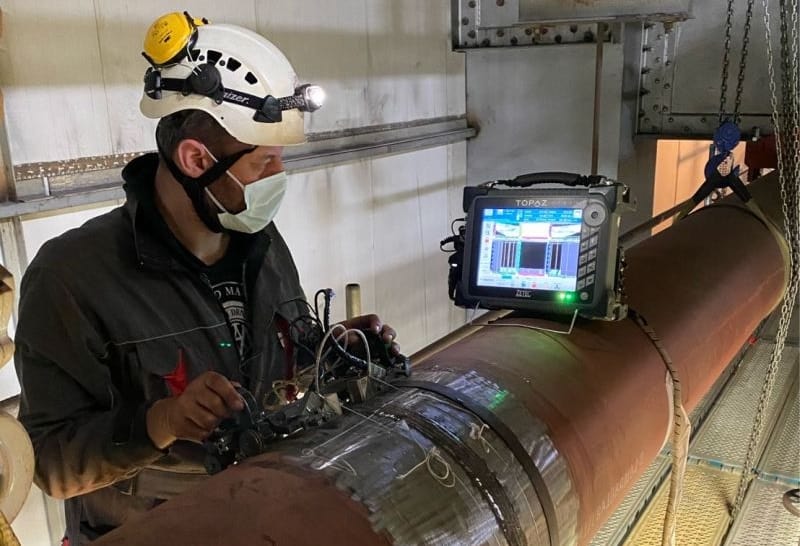Experience Quality: Premier Pipeline Welding Inspection Providers You Can Trust Fund
Comprehensive Overview of Pipe Welding Assessment Treatments
Pipe welding inspection procedures play a crucial duty in guaranteeing that welded connections satisfy rigid market requirements and specs. From meticulous pre-welding inspections to comprehensive post-weld assessments, a well-defined inspection process is important for maintaining the architectural sturdiness of pipelines.
Pre-welding Evaluation Preparations
Before beginning the welding procedure, complete pre-welding assessment preparations are crucial to guarantee the honesty and quality of the weld joint. These preparations include a precise exam of the materials to be welded, the welding tools, and the work environment. By conducting detailed pre-welding examination prep work, potential concerns can be determined and dealt with early on, leading to reputable and top quality weld joints.
Welding Treatment Certification
Thorough pre-welding examination prep work lay the structure for the important process of Welding Procedure Credentials, making sure the integrity and quality of the weld joint. Welding Procedure Certification (WPQ) is an essential action in the welding process that involves screening and accrediting welding procedures to assure they satisfy details requirements and needs. The WPQ process usually consists of welding treatment spec growth, welding treatment qualification screening, and documents of the results.
During welding treatment spec growth, crucial information such as the welding procedure, welding products, joint style, and welding parameters are defined to create an extensive procedure. Consequently, welding treatment credentials screening is performed to verify the suggested procedure's stability. This testing commonly involves welding examination coupons that go through different mechanical and non-destructive tests to analyze the weld's top quality and adherence to the specified standards.
In-process Weld Assessment
Throughout the welding process, in-process weld examination plays a vital role in guaranteeing the top quality and stability of the weld joint - Pipeline Welding Inspection. This kind of examination includes checking the welding parameters, evaluating the weld grain formation, and spotting any type of possible problems or stoppages as they take place. By performing in-process weld assessments, welding drivers can quickly attend to any kind of concerns that may arise, thus avoiding additional defects and making certain that the final weld meets the required requirements
Common approaches utilized for in-process weld assessment consist of aesthetic assessment, fluid penetrant testing, magnetic fragment testing, ultrasonic screening, and radiographic testing. Aesthetic assessment is often the very first step at the same time, permitting assessors to aesthetically examine the weld for surface abnormalities such as fractures, porosity, or incomplete fusion. Much more sophisticated techniques like ultrasonic screening and radiographic screening provide in-depth insights right into the inner structure of the weld, guaranteeing that there are no surprise problems that can compromise the weld joint's strength and honesty. On the whole, in-process weld inspection is necessary for preserving the high quality and dependability of bonded pipes.
Non-destructive Screening (NDT)
Non-destructive Screening (NDT) is an essential approach employed in pipeline welding examination to assess the integrity of weld joints without causing damage to the welded framework. By making use of different NDT techniques, examiners can evaluate the top quality of welds and determine any type of flaws or interruptions that might compromise the structural strength of the pipe. Typical NDT approaches made use of in pipe welding examination include Radiographic Screening (RT), Ultrasonic Screening (UT), Magnetic Particle Evaluating (MPT), Liquid Penetrant Testing (LPT), and Visual Screening (VT)
RT entails the use of X-rays or gamma rays to generate images of the inner framework of the weld, enabling inspectors to find flaws such as porosity, cracks, or incomplete combination. Additionally, VT includes aesthetic evaluation of welds to determine any visit our website visible blemishes.
Post-weld Assessment and Documentation


Documents of post-weld examination findings is important for preserving quality assurance documents and making sure conformity with sector requirements and laws. Comprehensive records should consist of info about the assessment techniques utilized, the area and nature of any type of defects located, and any type of rehabilitative activities taken - Pipeline Welding Inspection. Correct documents not only acts as a record of the weld's quality yet likewise help in future upkeep and assessment procedures
Conclusion

In verdict, pipeline welding inspection treatments play a critical pop over to this web-site role in guaranteeing the top quality and integrity of welds. From pre-welding examinations to post-weld paperwork, each action is important in preserving the security and efficiency of pipelines. By adhering to well established procedures and performing extensive evaluations, possible problems can be identified and addressed prior to they lead to costly repair services or failures. On the whole, adherence to proper assessment procedures is key to the success of pipeline welding tasks.
From careful pre-welding examinations to thorough post-weld analyses, a distinct assessment process is crucial for keeping the architectural strength of pipes. By performing in-process weld examinations, click for source welding drivers can without delay deal with any type of concerns that may arise, thereby making certain and preventing further defects that the last weld satisfies the required specs.
Common approaches utilized for in-process weld assessment consist of visual inspection, fluid penetrant testing, magnetic fragment screening, ultrasonic testing, and radiographic screening.Non-destructive Testing (NDT) is a vital method employed in pipe welding inspection to evaluate the honesty of weld joints without causing damage to the welded structure. Post-weld evaluation entails numerous techniques to assess the welds for defects, consisting of visual evaluation, color penetrant testing, magnetic particle screening, ultrasonic screening, and radiographic screening.